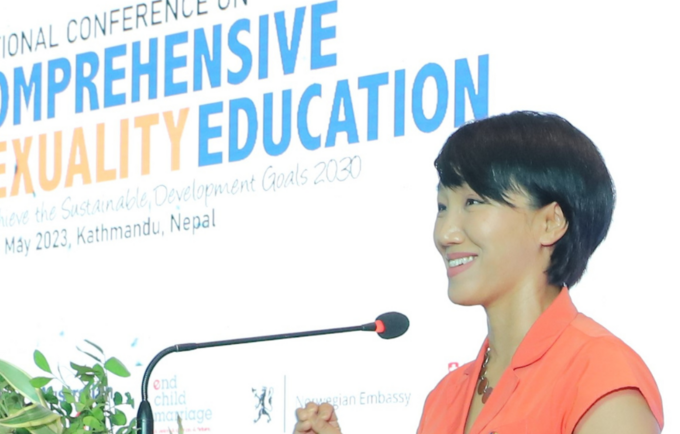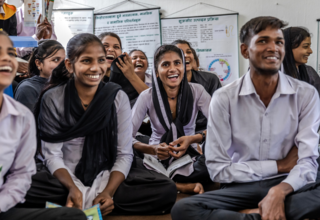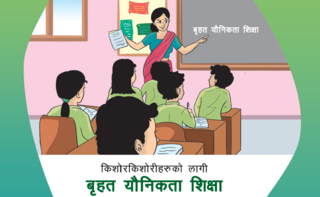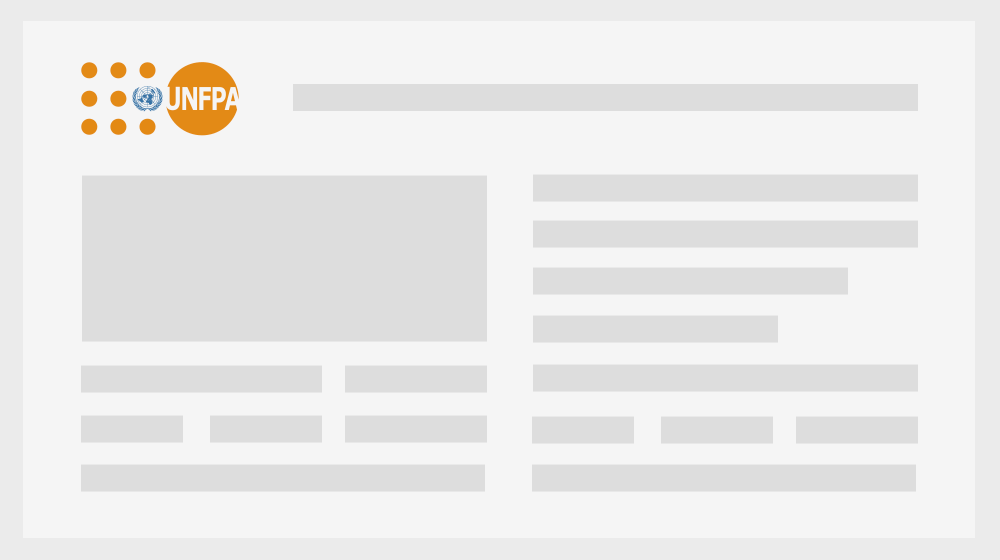Nepal is witnessing positive generational changes, with society and the economy undergoing significant transformation as the country moves to middle-income status. These changes will affect all aspects of people's lives. They will, however, both rely on and impact younger generations more than any other part of the population of Nepal.
This generation will be vital for realizing the full potential of the changes we are witnessing. An advanced economy is closely linked with education attainment and will require different skillsets from the workforce. A growing market demand for increased access to human capital able to respond to different forms of labour, including in the service and industrial sectors, will require increasingly higher levels of social capital.
Education is the key to unlocking potential
While there is a clear youth bulge that provides conditions for a demographic dividend, education is one of the keys to unlocking the potential of this generation. In this respect, the Government of Nepal has laid the groundwork for responding to many of these potential changes by investing increasingly in education and ensuring young people are attending primary and secondary school in unprecedented numbers. The net enrolment rate in basic education is now 96.1 percent and there are also increases in completion rates rising to 77.1 percent. The results of the census also show the proportion of the population attaining higher education attainment levels at upper secondary increased from 12 to 15 percent between 2011-21. In this period intermediate levels also increased from 6 to 13 percent.
Such advancements in education, however, also require guaranteeing an overall environment where adolescents are able to securely mature into productive adults in a safe environment. This means ensuring these young people not only have access to higher-quality education but, crucially, also their sexual and reproductive health and rights, which include comprehensive sexuality education.
Our UN and government programmes demonstrate time and time again that having easy access to education and age-appropriate comprehensive sexuality education prevents harmful trends such as school dropouts and child marriage as well as gender-based violence and equips girls and boys with the knowledge and skills to negotiate barriers to their full participation in public life. In a country where, according to the Multiple Indicator Cluster Survey in 2019, one in three girls aged 20–24 marry as children and 14 percent of women aged 15–19 had begun childbearing in 2022 this is not only necessary but essential. Even more so, in reducing these trends, these forms of education are acting as one of the key drivers that can really bring about social change and act as an economic driving force.
The wider social benefits
As one part of securing the sexual and reproductive health and rights of young people, comprehensive sexuality education is key to the continued health of not only women and girls but wider social and economic spheres. The active and productive participation of adolescents is crucial to continuing the advancements witnessed over the past decade. Investing in comprehensive sexuality education is therefore not only an investment in a generation of young people. It is an investment in the future.
The wider business case as to why comprehensive sexuality education is not only important in and out of schools but is also central to securing wider public welfare benefits is clear. Having healthy adolescents who are aware of their sexual and reproductive health and rights leads to positive outcomes. It is an accelerator for changes to the economy and society, and it is a game changer in terms of reducing harmful practices such as child marriage, gender-based violence and teen pregnancy that hold societies back.
Policy integration and multi-sectoral coordination
Although there is a positive set of policy framework outcome goals for comprehensive sexuality education in Nepal outlined in the School Education Sector Plan 2022-2031 and other policy documents, it is essential to invest more in both the coordination and implementation sides of learning.
The availability of comprehensive sexuality in schools is not standardized because it remains optional and the quality of teaching across schools, that do provide lessons, varies. A successful programme of comprehensive sexuality education also requires access beyond school facilities. Integrating learning more closely with health services is essential for acceleration for the effective implementation across the country. More incentives are required to ensure the teaching of comprehensive sexuality education is mandatory in schools across grades and there needs to be increased efforts to support implementation of guidelines.
Communities are crucial
A point also often overlooked is that securing the sexual and reproductive health and rights of girls and boys requires a high degree of support from peer groups, families, and communities. And one of the key catalysts for this conversation is comprehensive sexuality education, ensuring that there is not only awareness but also an understanding that important life decisions are fundamentally grounded in this issue of sexual and reproductive health and rights.
In this respect, we need to think holistically about how comprehensive sexuality education works across institutions, communities, and families to ensure strong support across these spaces for the sexual and reproductive health and rights of adolescents. We cannot only leave this form of education in the classroom but also need to ensure it extends across different communities and social spaces.
If strong investments in comprehensive sexuality education pays wider dividends and leads to positive outcomes, there needs to be an equally strong commitment to coordination, implementation, building capacity at local levels, and making available resources for the teaching of comprehensive sexuality education. These also need to ensure communities are supportive of age-appropriate sexuality education and do not feel excluded or somehow misunderstand the goals of such learning.
Towards the future
Successful comprehensive sexuality education programmes are always rooted in the communities that they engage with. While there is significant progress in Nepal on developing a conducive policy environment, there remain challenges in ensuring adolescents have full access to student-friendly and comprehensive learning tools that lead to improved sexual and reproductive health outcomes.
Developing strategies for overcoming any obstacles to these learning opportunities is perhaps one of the biggest challenges ahead. I am, however, confident that the Government of Nepal will scale up its investment in comprehensive sexuality education in order to achieve the national commitments made at the International Conference on Population and Development-ICPD+25- in Nairobi in 2019 that will enable Nepal to achieve Sustainable Development Goals by 2030. A key step in this direction will be to ensure the 16th national development plan invests in young people, especially adolescent girls, to realize the national development vision. Universal access to sexual and reproductive health and rights including comprehensive sexuality education should be central to that plan.
Young Hong is the Resident Representative, UNFPA




